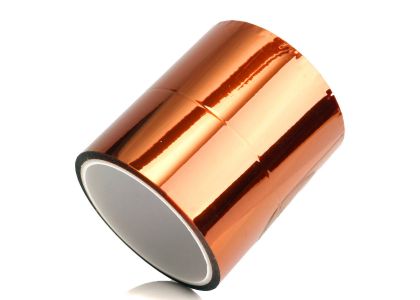
Imagine a high-tech aerospace project where every component relies on the dependable performance of polyimide tape. Whether used for insulation in complex electronic circuits or as a protective shield against extreme conditions, the effectiveness of this tape is critical. As professionals in industries like aerospace, electronics, and automotive work with polyimide tape, understanding its shelf life becomes essential for ensuring optimal performance in these crucial applications.
Consider a manufacturing facility that chooses a polyimide tape manufacturer known for stringent quality control. High-quality polyimide film production involves selecting superior raw materials and implementing rigorous testing protocols, ensuring that the tape can withstand thermal shocks in electric engines or resist chemical exposure in electronic devices.
In contrast, using inferior quality polyimide film can lead to disastrous results. For example, a small robotics company that opted for low-cost tape may find that, within months, the tape loses its adhesive properties, resulting in costly equipment failures. This underscores the importance of film quality in maintaining product integrity.
Several factors influence the shelf life of polyimide tape:
Storage Conditions: Picture a busy electronics lab with rolls of polyimide tape improperly stored on a warm, humid shelf. Over time, the heat and moisture can break down the adhesive, making it ineffective when it’s finally needed. In contrast, a technician who stores tape in a cool, dry environment ensures it remains reliable for future projects.
Environmental Exposure: Consider the real-world scenario of a solar panel manufacturer whose tape has been exposed to sunlight during transportation. If they hadn’t stored it in a sealed container, the tape may degrade from UV exposure, risking the integrity of their solar panels.
Adhesive Type: Take, for example, a team working on a military application that requires specialized perfect pi tape for high-temperature applications. This tape’s adhesive chemistry is designed to withstand extreme conditions, demonstrating that selecting the right adhesive type can provide greater durability and performance compared to standard options.
Most polyimide tape manufacturers recommend storing their products for one to three years. For instance, a company using general purpose polyimide film for routine applications can confidently plan to utilize their tape within this timeframe, but should also look for specific storage guidelines to extend usability. However, a manufacturer creating components for space missions might invest in more advanced formulations, understanding these could have a longer shelf life under optimal conditions.
As polyimide tape nears the end of its shelf life, certain signs can indicate degradation:
Loss of Adhesion: An automotive engineer notices that the tape no longer adheres properly during installation, signaling that the adhesive quality has been compromised.
Brittleness: A technician working in a laboratory may observe that the tape has become brittle and cracks when stretched, indicating it’s time to replace it before it causes failures in sensitive applications.
Discoloration: Imagine a maintenance manager for a manufacturing plant finding yellowed tape during routine checks. This discoloration suggests the tape has been exposed to unfavorable conditions, and using it could lead to critical failures.
To maximize the shelf life of polyimide tape, consider following these best practices:
Temperature Control: Store the tape in a cool, dry area, ideally between 15°C and 25°C (59°F and 77°F), similar to how sensitivity to temperature is managed for sensitive electronic components.
Humidity Control: A factory floor with humidity levels well below 60% can significantly extend the usability of its stored polyimide tape, preventing moisture absorption that disrupts adhesive properties.
Avoiding Contamination: For effective storage, ensure that your tape is kept in clean, dry containers, much like how sensitive materials are stored to prevent contamination.
Regular Inspections: Setting a schedule for periodic inspections can prove invaluable. Just as a quality assurance process checks the condition of components, a simple look at your stored tape can catch signs of degradation early.
Understanding the shelf life of polyimide tape is vital for professionals across various industries. Implementing effective storage practices and recognizing signs of degradation can help maintain optimal product performance. By following the recommended guidelines and consulting resources from trusted polyimide tape manufacturers, users can effectively utilize tape within its intended lifespan.
Ultimately, whether you are relying `storage and vigilance against degradation can lead to lasting efficiency and safety in your operations.